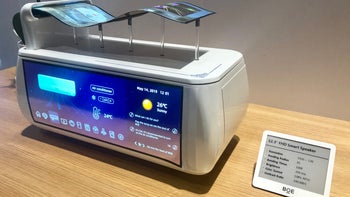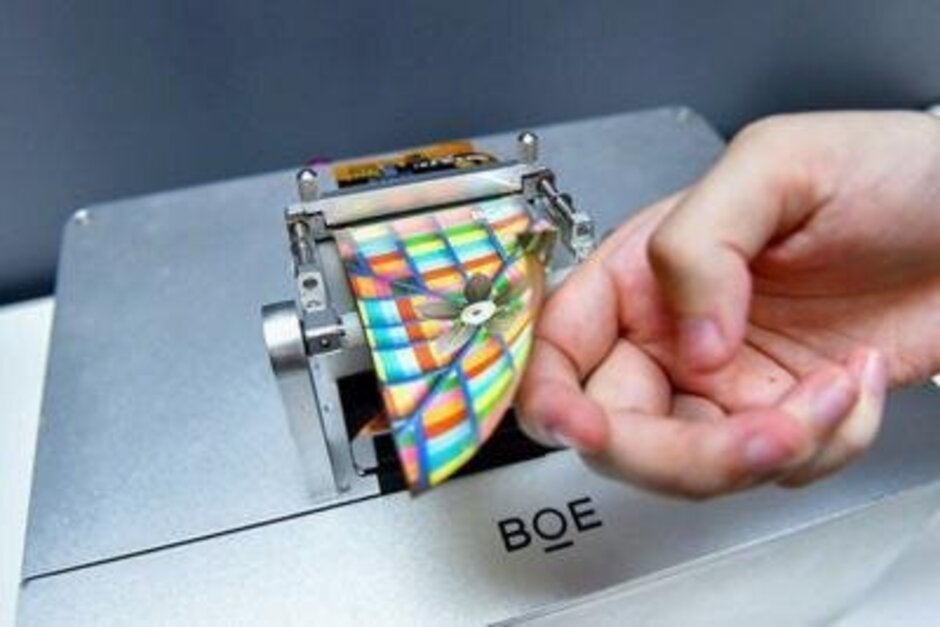Apple will reportedly start to phase out Samsung as a supplier of this major iPhone part

It's no surprise that 90% of the OLED panels used on the Apple iPhone 11 Pro and iPhone 11 Pro Max are sourced from Apple's main smartphone rival Samsung with the remaining 10% coming from LG Display. Three suppliers provide Apple with the LCD glass used on models like the iPhone 11: LG Display, Japan Display, and Sharp. Apple has poured money into Japan Display over the years including another $100 million this year. The tech giant is now working with Sharp to purchase a major LCD panel manufacturing facility from Japan Display for as much as $820 million. Sharp is expected to purchase the factory by next March and work out a separate arrangement with Apple afterward.
The factory, located in Hakusan City, Ishikawa prefecture in western Japan, first started production in 2015. Ironically, Apple loaned Japan Display $1.5 billion to help build it and was supposed to receive a percentage of the sales of LCD panels produced at the plant. However, just as Japan Display turned the factory on, phone manufacturers were turning away from LCD screens and turning to OLED. As a result, the factory operated at only 50% of capacity and was closed this past July with Apple still owed $800 million by the company. It should be pointed out that while Japan Display is late to the OLED game, it does churn out such panels for the Apple Watch Series 5.
Apple has apparently certified BOE's OLED panels
A new report from South Korea says that BOE will deliver to Apple next year, 45 million flexible OLED panels for the iPhone. 26 million will come from LG Display and Samsung will provide 150 million panels. For Samsung, that figure represents a huge decline from the 230 million panels that Samsung shipped to Apple this year. Back in August, we told you that Apple was in the process of certifying BOE's displays with the goal of having them replace screens made by Samsung. BOE has apparently passed the test and Apple now sees a way for it to reduce its reliance on Sammy. We could see Apple continue to purchase fewer panels from BOE every year until Samsung's screens are no longer used on the iPhone.

BOE's flexible OLED panel has reportedly been approved by Apple for use on the 2020 iPhone
Apple has purchased LCD displays from BOE over the last two years, employing them for the iPad and the MacBook. So there is a level of comfort and familiarity with the company on Apple's part. Ever since BOE started selling its lower-priced OLED panels to Huawei for 2018's Mate 20 series, the outfit has seen a hike in its reputation. And if Apple ends up replacing Samsung with BOE, the latter will get a boost that most firms in the supply chain can only dream about. Apple, for its part, will be spending less money for the displays because of BOE's lower pricing.
According to TF International analyst Ming-Chi Kuo, Apple will release five new phones next year with only one, the iPhone 9, sporting an LCD display. The remaining units will be equipped with AMOLED screens. According to Kuo, those models will include a 6.7-inch iPhone 12 Pro Max, a 6.1-inch iPhone 12 Pro, a 5.4-inch iPhone 12 and a 6.1-inch iPhone 12 Plus. Whew! In other words, there will be enough demand to satisfy Apple's OLED suppliers. And with the analyst looking for Apple to sell 20 million to 30 million iPhone 9 units next year, the three LCD suppliers will also be busy. Demand for the iPad has been bucking the sluggish industry trend during the last two quarters; with this growth, Apple will need to procure enough LCD displays to meet its needs.
So if today's report is a legit look at what is going on behind the scenes, starting next year Apple will be adding a third supplier of OLED displays to its supply chain. BOE's flexible OLED panels pass Apple's demanding quality test and the supplier is apparently undercutting Samsung on price. It is hard to see what Samsung could do to fight back except wield a sharper price-cutting ax. And even then, it might not be enough to persuade Apple to keep buying displays from Samsung.










Things that are NOT allowed: